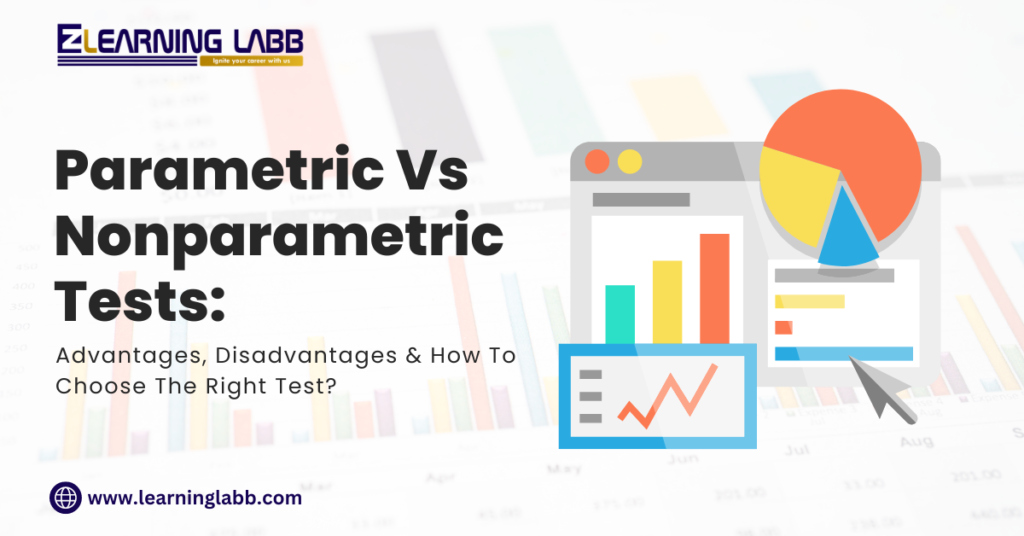What Is The Difference Between Parametric And Nonparametric Tests: When scientists do their research, they rely a lot on something called statistical analysis. It’s like the backbone of their work because it helps them make sense of all the data they collect. Now, when they’re analyzing data, they usually use two main types of tests: parametric and nonparametric tests. These tests are like tools in a toolbox, and picking the right one is super important for getting accurate results.
Parametric tests are like the ones that have specific rules. They work best when the data follows certain patterns like being all nicely spread out in a certain way. But if the data doesn’t follow those rules, then nonparametric tests step in. They’re like the flexible ones, able to handle all sorts of data, even if it’s a bit messy or doesn’t follow any specific pattern.
So, it’s like choosing between a strict teacher and a laid-back one. The strict one works great if everything is in order, but the laid-back one is there for you when things get a bit chaotic. Knowing the differences between these two types of tests helps scientists pick the right one for their research, so they can trust the conclusions they draw from their data.
What Is The Difference Between Parametric And Nonparametric Tests?
Check out the difference between parametric and nonparametric tests here:
Parametric Tests
Parametric tests are based on specific assumptions about the distribution of data. These assumptions typically include parameters such as mean, variance, and distribution shape. Common parametric tests include t-tests, ANOVA, and linear regression. These tests are powerful when data meet the underlying assumptions, providing precise estimates and high statistical power.
Characteristics of parametric tests:
- Assumption of normality: Parametric tests assume that the data follow a normal distribution.
- Homogeneity of variance: Parametric tests require that the variance of data is consistent across groups or conditions.
- Interval or ratio scale: Parametric tests are suitable for continuous data measured on an interval or ratio scale.
- Greater statistical power: Parametric tests are generally more powerful than nonparametric tests when assumptions are met.

Nonparametric Tests
Nonparametric tests, on the other hand, make minimal assumptions about the distribution of data. These tests are robust and versatile, making them suitable for analyzing data that do not meet the assumptions of parametric tests. Common nonparametric tests include the Mann-Whitney U test, Wilcoxon signed-rank test, and Kruskal-Wallis test.
Characteristics of nonparametric tests:
- Distribution-free: Nonparametric tests do not rely on assumptions about the distribution of data.
- Ordinal or nominal scale: Nonparametric tests are applicable to categorical or ordinal data, as well as continuous data.
- Robustness: Nonparametric tests are robust to outliers and deviations from normality, making them suitable for skewed or non-normally distributed data.
- Lower statistical power: Nonparametric tests typically have lower statistical power compared to parametric tests, especially with smaller sample sizes.
What Are The Advantages Of Parametric And Nonparametric Tests?
Now that we’ve gone through the difference between parametric and nonparametric tests, let’s get to know the advantages of parametric and nonparametric tests:
Advantages of Parametric Tests
- Higher statistical power: Parametric tests often yield more precise results and higher statistical power when data meet the underlying assumptions.
- Suitable for specific data types: Parametric tests are best suited for continuous data measured on interval or ratio scales.
- Clear interpretation: Results from parametric tests are often easier to interpret and communicate due to their reliance on specific assumptions.
Advantages of Nonparametric Tests
- Robustness: Nonparametric tests are robust to outliers and deviations from normality, making them suitable for analyzing data with irregular distributions.
- Versatility: Nonparametric tests can be applied to a wide range of data types, including ordinal, nominal, and continuous data.
- Flexibility: Nonparametric tests require minimal assumptions about the distribution of data, providing greater flexibility in analysis.

What Are The Disadvantages Of Parametric And Nonparametric Tests?
With the advantages of parametric and nonparametric tests out of our way, let’s get to the disadvantages of parametric and nonparametric tests:
Disadvantages of parametric tests
- Sensitive to assumptions: parametric tests can produce misleading results if data deviate from the underlying assumptions.
- Less robust to outliers: outliers or deviations from normality can significantly impact the accuracy of parametric test results.
Disadvantages of nonparametric tests
- Lower statistical power: nonparametric tests generally have lower statistical power compared to parametric tests, especially with smaller sample sizes.
- Less precision: results from nonparametric tests may be less precise and informative compared to parametric tests when data meet the underlying assumptions.
Parametric And Nonparametric Test In R And Python
When it comes to analyzing data, statisticians rely on two main types of tests: parametric and nonparametric. These tests help us understand whether the differences we observe are due to real effects or simply random chance.
In both R and Python, you’ll find tools to perform these tests, catering to different types of data and assumptions.
So, which should you use? It depends on your data and the assumptions you’re willing to make. If your data meets the criteria for parametric tests, they can be more powerful. But if not, nonparametric tests offer a reliable alternative. Knowing when and how to apply each type of test can help you draw meaningful conclusions from your data, whether you’re working in R or Python.

On A Final Note…
The choice between parametric and nonparametric tests depends on the nature of the data and the assumptions underlying the analysis. So, what is the difference between parametric and nonparametric tests?
Parametric tests offer greater precision and statistical power but require data to meet specific assumptions. Nonparametric tests, on the other hand, are robust and flexible, making them suitable for a wider range of data types and distributions.
To become an expert in Data Science, check us out at Learning Labb.





